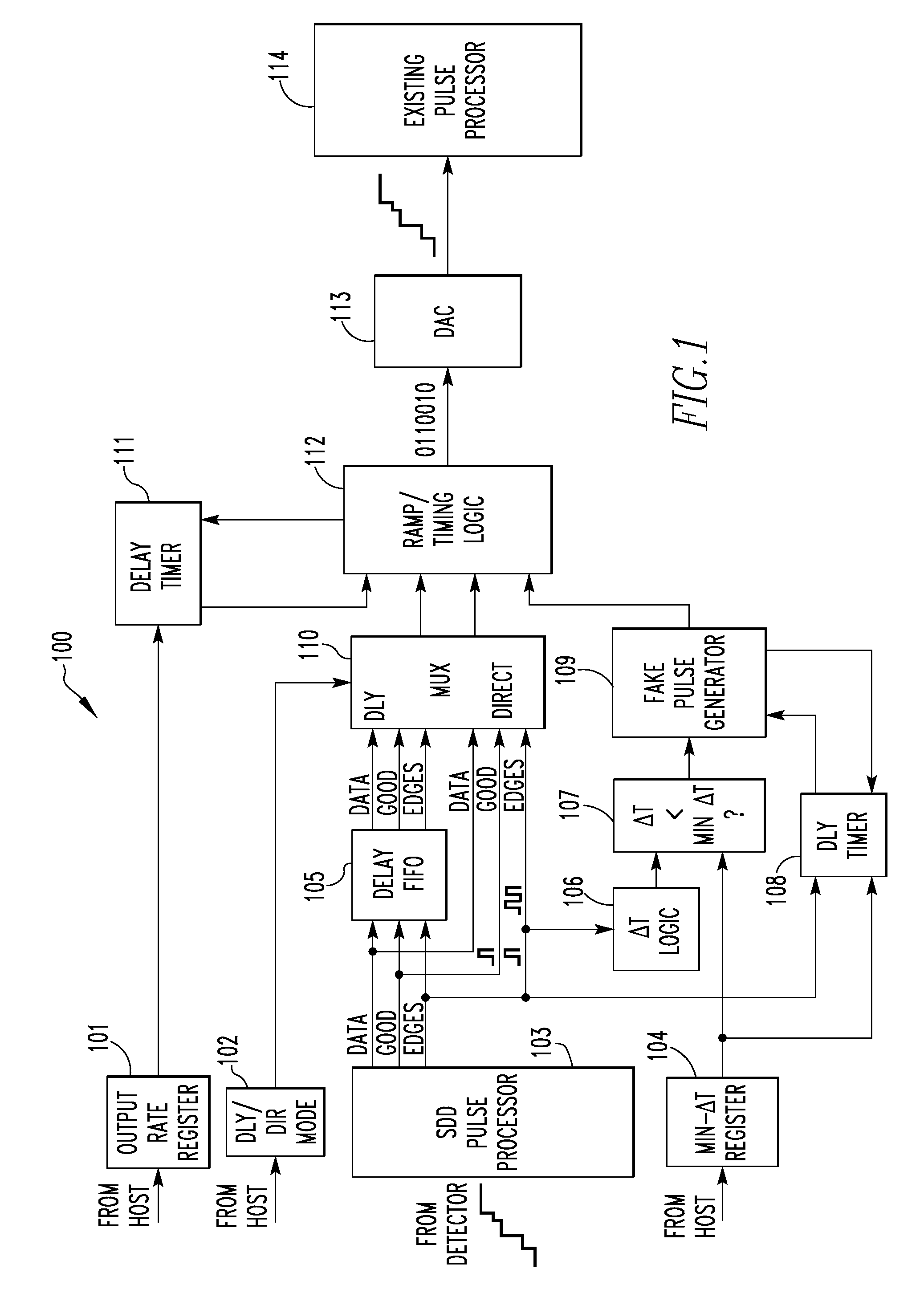Adapting a high-performance pulse processor to an existing spectrometry system
a pulse processor and high-performance technology, applied in the field of energy-dispersive radiation spectrometry systems, can solve the problems of insufficient peaking time of existing pulse processors, inability to handle the output of sdds (and associated preamplifiers), and start to worsen
- Summary
- Abstract
- Description
- Claims
- Application Information
AI Technical Summary
Benefits of technology
Problems solved by technology
Method used
Image
Examples
Embodiment Construction
[0031]The subject matter described herein applies to energy-dispersive radiation spectrometry systems generally. However, for ease of illustration and description, the invention will be described in connection with embodiments that employ an X-ray spectrometry system. This is not to be considered to be limiting, and it is to be understood that the invention may be applied in connection with other types of energy-dispersive radiation spectrometry systems, such as, without limitation, gamma-ray spectrometry systems.
[0032]It is an object of the present invention to allow the Si(Li) detector of an existing system to be replaced with an SDD detector without requiring any change in the hardware or software of the existing system. The method described herein takes the output of an SDD-optimized pulse processor and generates the input signal expected by the existing pulse processor. In one embodiment, piled-up pulses which would not be detected as such by the existing pulse processor are om...
PUM
 Login to View More
Login to View More Abstract
Description
Claims
Application Information
 Login to View More
Login to View More - R&D
- Intellectual Property
- Life Sciences
- Materials
- Tech Scout
- Unparalleled Data Quality
- Higher Quality Content
- 60% Fewer Hallucinations
Browse by: Latest US Patents, China's latest patents, Technical Efficacy Thesaurus, Application Domain, Technology Topic, Popular Technical Reports.
© 2025 PatSnap. All rights reserved.Legal|Privacy policy|Modern Slavery Act Transparency Statement|Sitemap|About US| Contact US: help@patsnap.com



